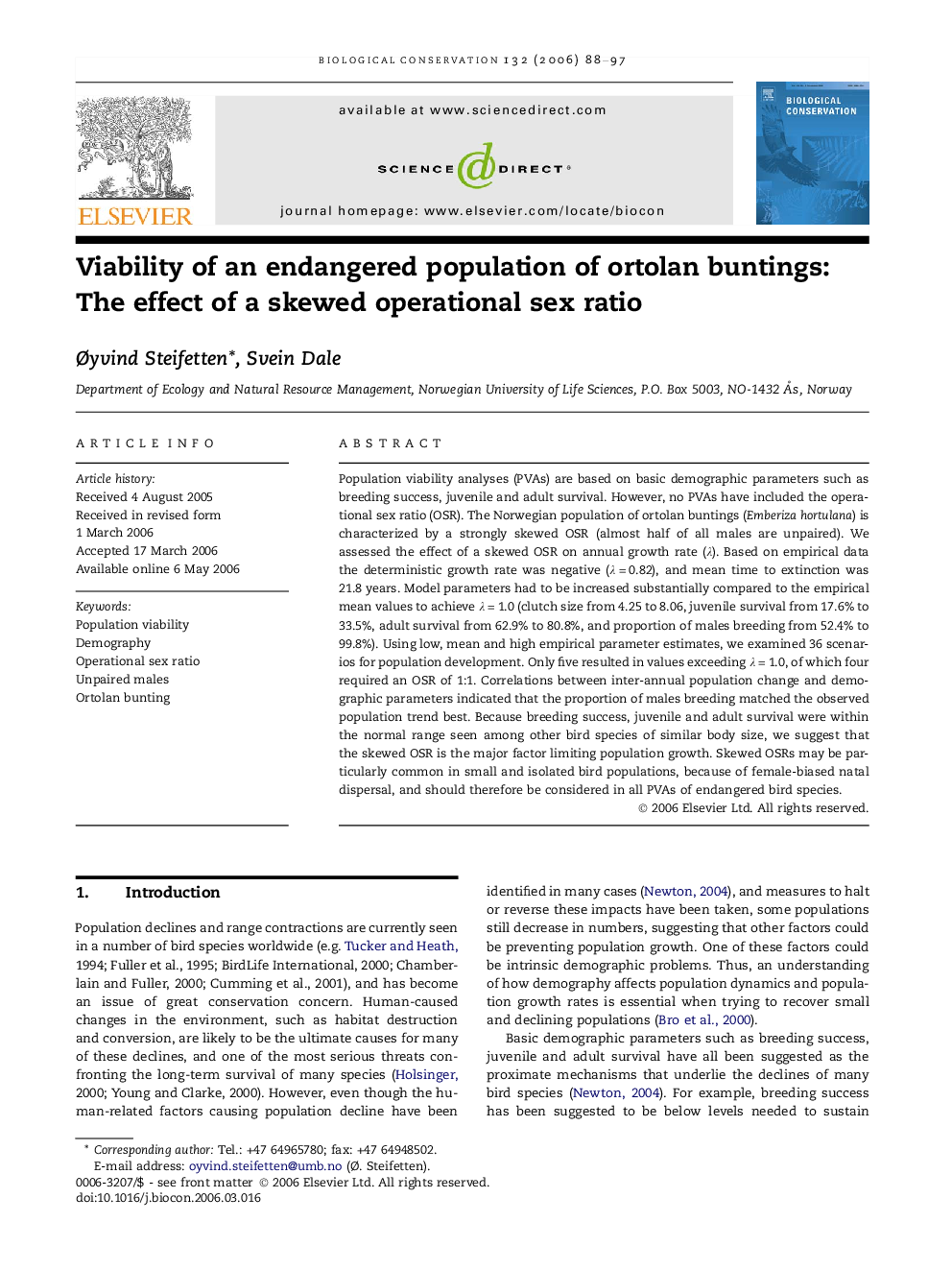| Article ID | Journal | Published Year | Pages | File Type |
|---|---|---|---|---|
| 4387653 | Biological Conservation | 2006 | 10 Pages |
Population viability analyses (PVAs) are based on basic demographic parameters such as breeding success, juvenile and adult survival. However, no PVAs have included the operational sex ratio (OSR). The Norwegian population of ortolan buntings (Emberiza hortulana) is characterized by a strongly skewed OSR (almost half of all males are unpaired). We assessed the effect of a skewed OSR on annual growth rate (λ). Based on empirical data the deterministic growth rate was negative (λ = 0.82), and mean time to extinction was 21.8 years. Model parameters had to be increased substantially compared to the empirical mean values to achieve λ = 1.0 (clutch size from 4.25 to 8.06, juvenile survival from 17.6% to 33.5%, adult survival from 62.9% to 80.8%, and proportion of males breeding from 52.4% to 99.8%). Using low, mean and high empirical parameter estimates, we examined 36 scenarios for population development. Only five resulted in values exceeding λ = 1.0, of which four required an OSR of 1:1. Correlations between inter-annual population change and demographic parameters indicated that the proportion of males breeding matched the observed population trend best. Because breeding success, juvenile and adult survival were within the normal range seen among other bird species of similar body size, we suggest that the skewed OSR is the major factor limiting population growth. Skewed OSRs may be particularly common in small and isolated bird populations, because of female-biased natal dispersal, and should therefore be considered in all PVAs of endangered bird species.
